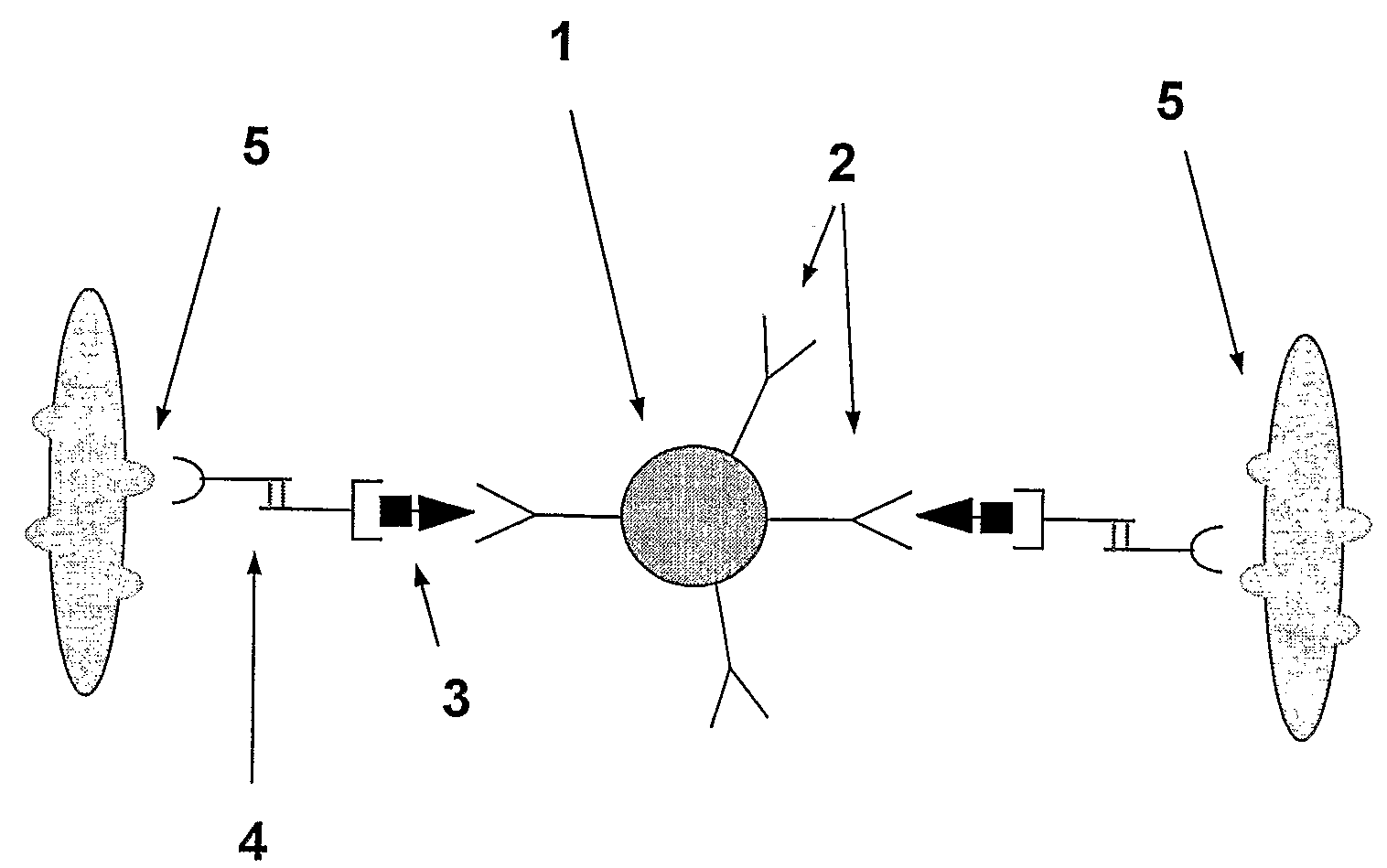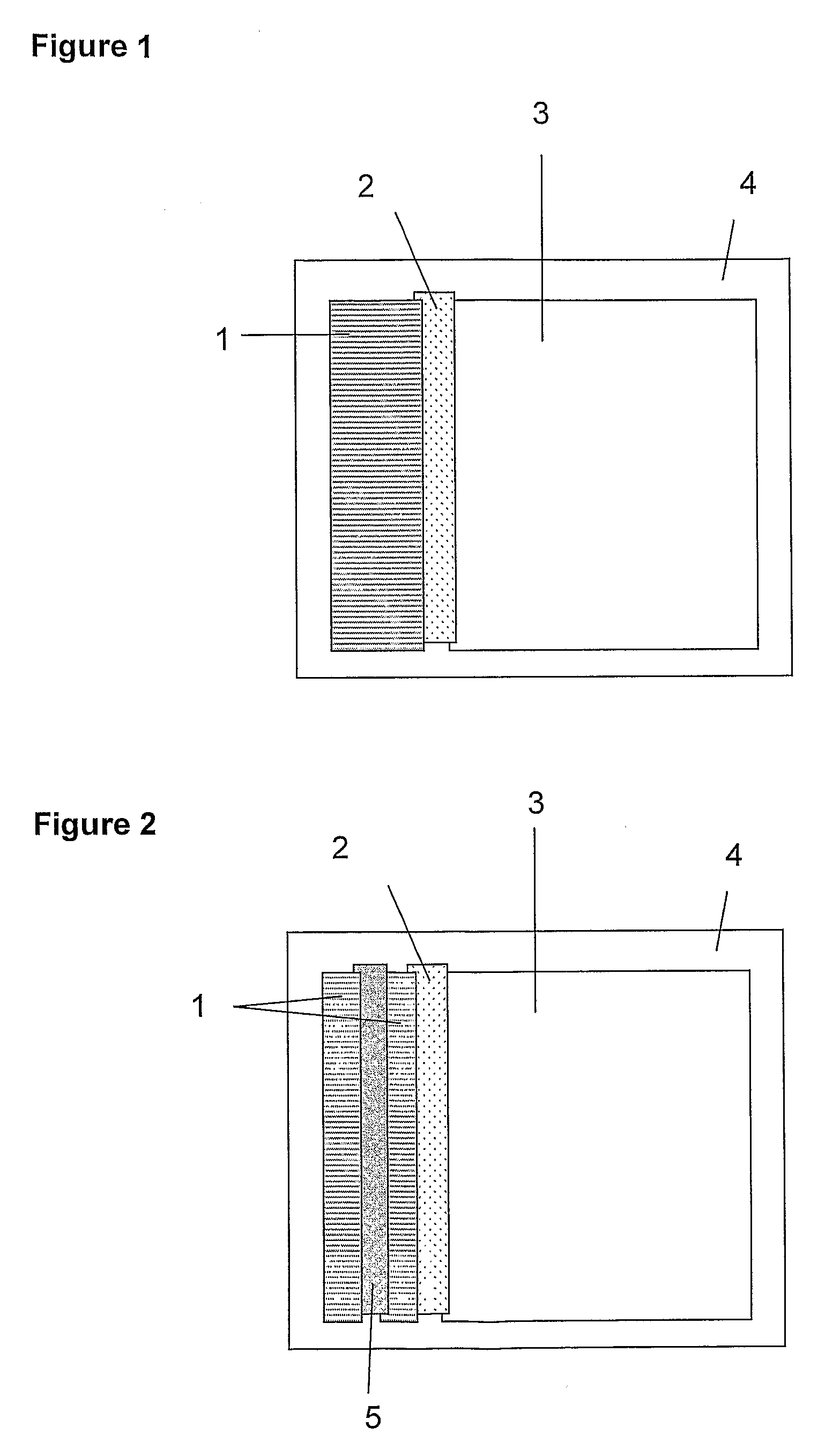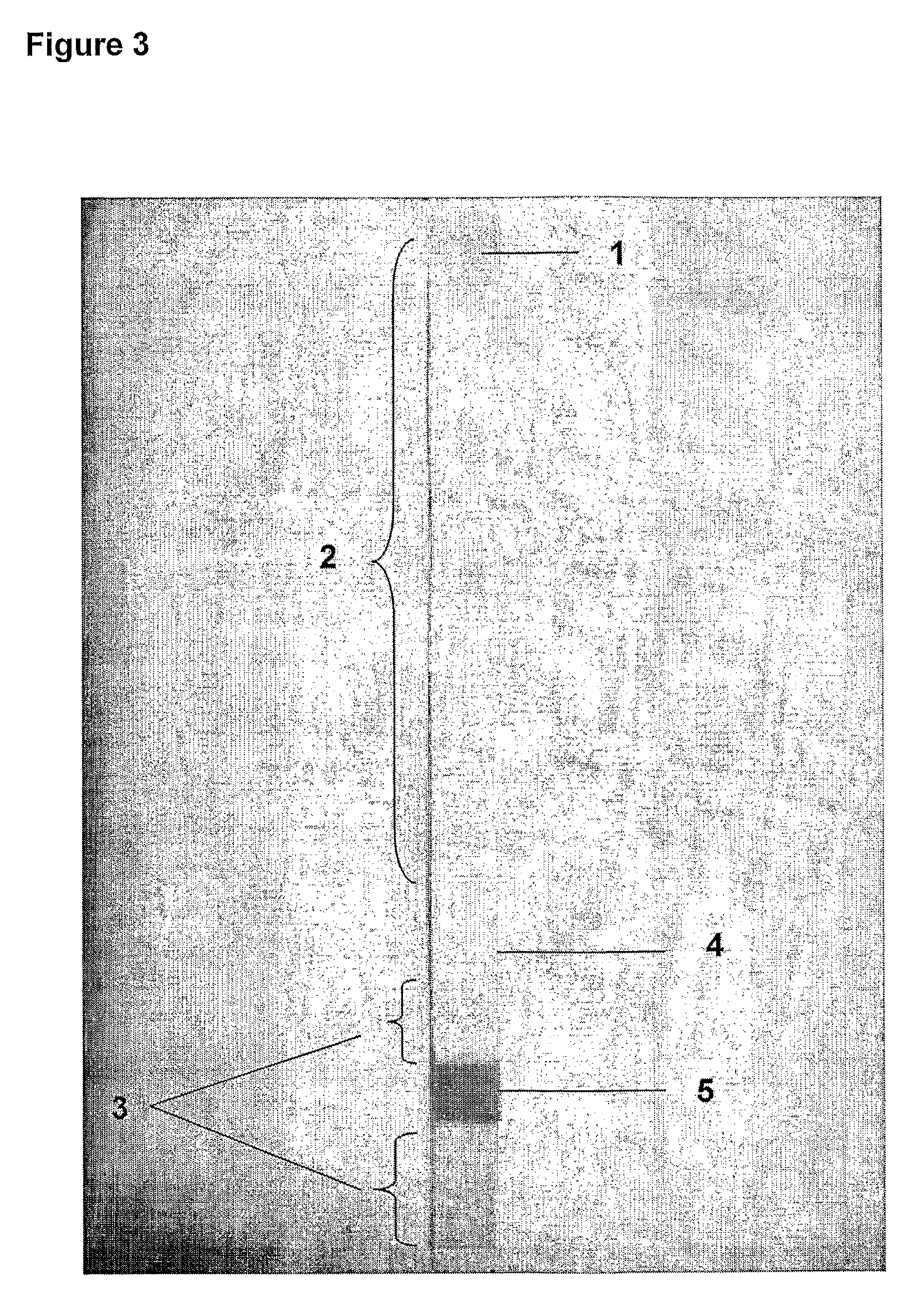Agglutination Assay
a technology of agglutination assay and agglutination solution, which is applied in the direction of instruments, suspensions and porous material analysis, chemical/physical/physico-chemical processes, etc., can solve the problem of difficult to achieve stable agglutination with smaller analytes
- Summary
- Abstract
- Description
- Claims
- Application Information
AI Technical Summary
Benefits of technology
Problems solved by technology
Method used
Image
Examples
example 1
Preparation of Soluble Hub Reagent 1
[0132]1. Desalt the anti-hCG (alpha-subunit) into 0.1 M phosphate pH 7.5 buffer, using a 1.6×15 cm G25M Sephadex column, and determine concentration and yield.
[0133]2. Activate the anti-hCG antibody, using 8 molar equivalents of NHS-PEG-MAL. Incubate the reaction mixture at 20° C. for two hours. Quench the reaction with 100 molar equivalents of glycine and desalt the maleimide-activated anti-hCG into 5 mM EDTA, PBS pH 7.3 buffer using two shots down a 1.6×15 cm G50F Sephadex column. Determine concentration and yield of activated antibody.
[0134]3. Activate a 500 kDalton aminodextran using 1000 molar equivalents of 2-Iminothiolane (2-IT). Incubate the reaction mixture at 20° C. for 110 minutes. Desalt the thiol activated aminodextran into 5 mM EDTA, PBS pH 7.3 buffer, using G25M Sephadex media. Determine incorporation ratio of thiol:aminodextran using the Ellman's assay.
[0135]4. Add 25 Molar equivalents of the maleimide-activated anti-hCG antibody t...
example 2
Preparation of Soluble Hub Reagent 2
[0136]1. Desalt the anti-hCG (alpha-subunit) into 0.1 M phosphate pH 7.5 buffer, using a 1.6×15 cm G25M Sephadex column, and determine concentration and yield.
[0137]2. Activate the anti-hCG antibody, using 8 molar equivalents of NHS-PEG-MAL. Incubate the reaction mixture at 20° C. for two hours. Quench the reaction with 100 molar equivalents of glycine and desalt the maleimide-activated anti-hCG into 5 mM EDTA, PBS pH 7.3 buffer using two shots down a 1.6×15 cm G50F Sephadex column. Determine concentration and yield of activated antibody.
[0138]3. Activate a 500 kDalton aminodextran using 1000 molar equivalents of 2-Iminothiolane (2-IT). Incubate the reaction mixture at 20° C. for 110 minutes. Desalt the thiol activated aminodextran into 5 mM EDTA, PBS pH 7.3 buffer, using G25M Sephadex media. Determine incorporation ratio of thiol: aminodextran using the Ellman's assay.
[0139]4. Add 25 Molar equivalents of the maleimide-activated anti-hCG antibody ...
example 3
Preparation of Membrane Strips for Tests Using Wet Reagents
[0141]Membrane materials were cut to size as follows:[0142](i) Wick, e.g. Surewick G028-14 (Millipore), 30 mm×60 mm.[0143](ii) Agglutinate trapping membrane, e.g. Fusion 5 (Whatman), 5 mm×60 mm.[0144](iii) Absorbent sink, e.g. Absorbent Pad 222 (Ahlstrom), 55 mm×60 mm.[0145](iv) Self-adhesive plastic (×2) e.g. 0.04″ Clear polyester with D / C hydrophilic PSA (G&L) 70 mm×100 mm
[0146]A composite ‘card’ of the above materials was assembled as shown in FIG. 1. Adjacent membrane materials were overlapped by approximately 1 mm, to ensure good fluid transfer between successive sections of the strip. The second sheet of self-adhesive plastic was applied firmly to the upper surface. The resulting ‘card’ was sliced into 5 mm strips and the plastic trimmed to allow reagents and sample to enter the wick.
PUM
 Login to View More
Login to View More Abstract
Description
Claims
Application Information
 Login to View More
Login to View More - R&D
- Intellectual Property
- Life Sciences
- Materials
- Tech Scout
- Unparalleled Data Quality
- Higher Quality Content
- 60% Fewer Hallucinations
Browse by: Latest US Patents, China's latest patents, Technical Efficacy Thesaurus, Application Domain, Technology Topic, Popular Technical Reports.
© 2025 PatSnap. All rights reserved.Legal|Privacy policy|Modern Slavery Act Transparency Statement|Sitemap|About US| Contact US: help@patsnap.com



